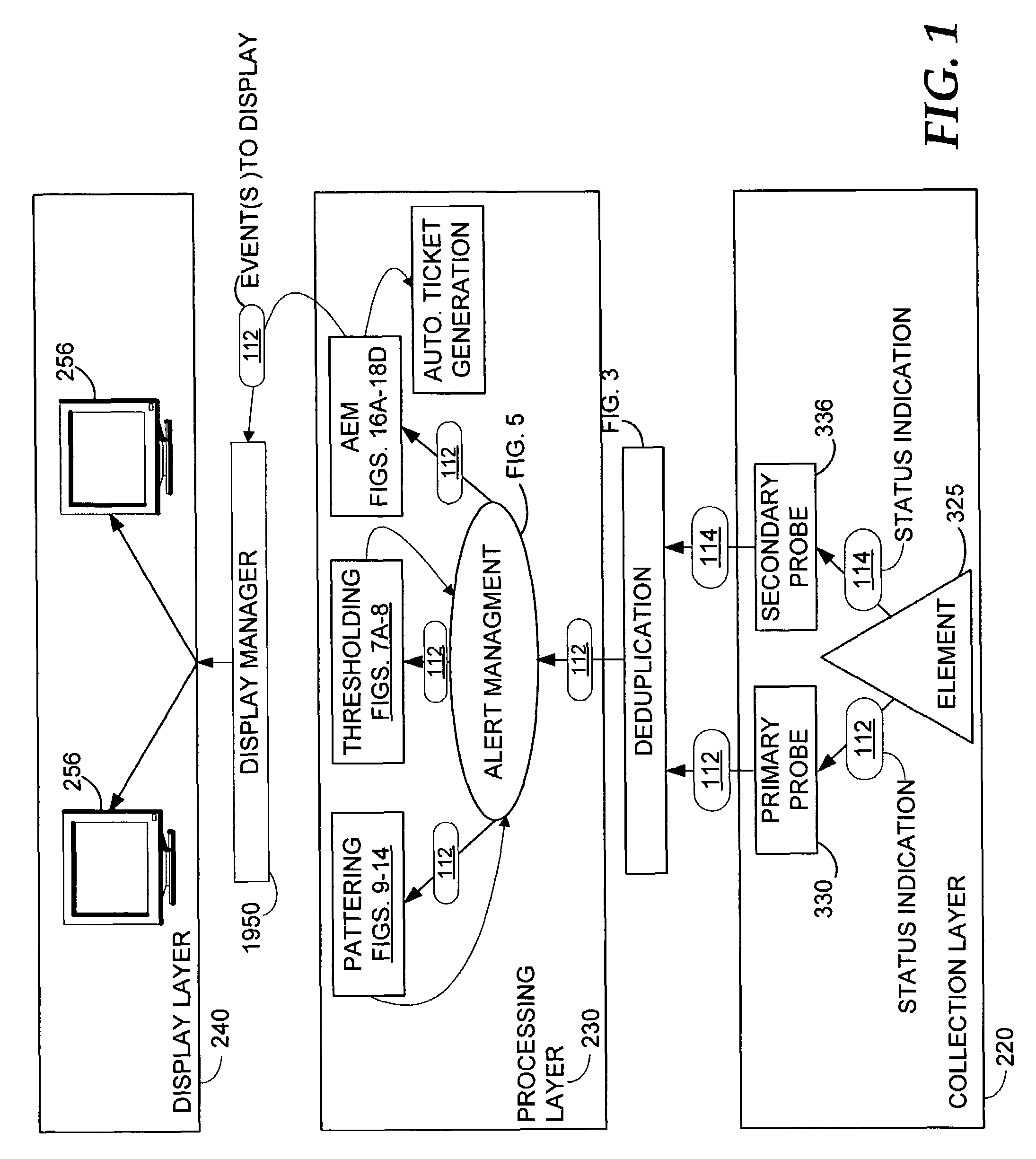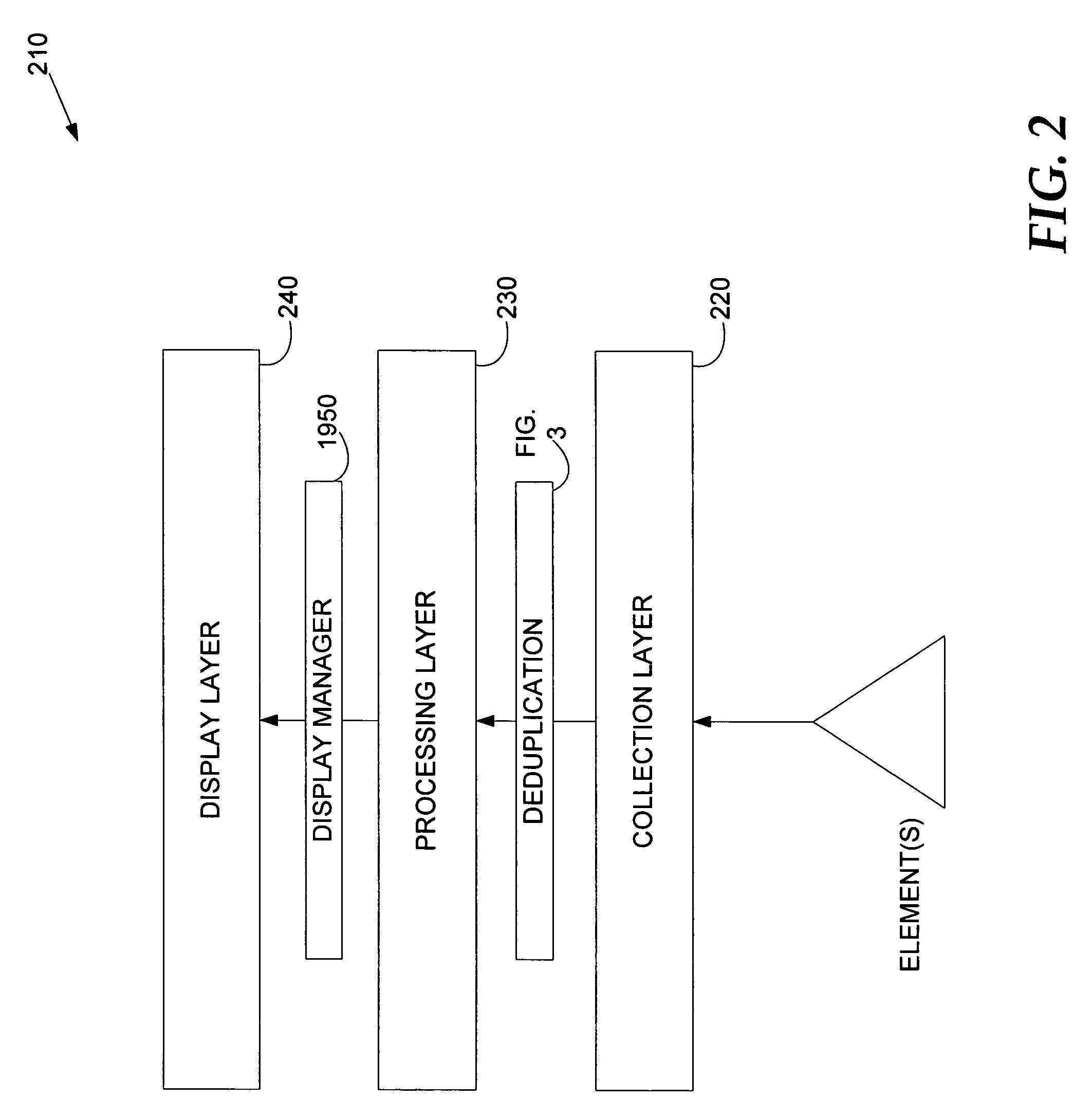Method and system for deduplicating status indications in a communications network
a communication network and status indication technology, applied in the field of communication network status indication deduplication method and system, can solve the problems of increasing complexity of networks, increasing complexity of communications networks, and increasing difficulty in managing, so as to reduce the time associated, and the difficulty of managing a communications network is directly proportional to its complexity
- Summary
- Abstract
- Description
- Claims
- Application Information
AI Technical Summary
Benefits of technology
Problems solved by technology
Method used
Image
Examples
Embodiment Construction
[0051]The present invention provides a method and system for determining the root causes of one or more alarms in a communications network and troubleshooting problems associated with the same.
[0052]Specific hardware devices, programming languages, components, processes, and numerous details including operating environments and the like are set forth to provide a thorough understanding of the present invention. In other instances, structures, devices, and processes are shown in block-diagram form, rather than in detail, to avoid obscuring the present invention. But an ordinary-skilled artisan would understand that the present invention may be practiced without these specific details. Computer systems, gateways, workstations, and other machines may be connected to one another across a communication medium including, for example, a network or networks.
[0053]Throughout the description of the present invention, several acronyms and shorthand notations are used to aid the understanding o...
PUM
 Login to View More
Login to View More Abstract
Description
Claims
Application Information
 Login to View More
Login to View More - R&D
- Intellectual Property
- Life Sciences
- Materials
- Tech Scout
- Unparalleled Data Quality
- Higher Quality Content
- 60% Fewer Hallucinations
Browse by: Latest US Patents, China's latest patents, Technical Efficacy Thesaurus, Application Domain, Technology Topic, Popular Technical Reports.
© 2025 PatSnap. All rights reserved.Legal|Privacy policy|Modern Slavery Act Transparency Statement|Sitemap|About US| Contact US: help@patsnap.com



